Mercedes-AMG GT XX Concept Exceeds 200 MPH and Boasts Ultra-Fast Charging
"Technology showcased in the concept will debut in a production AMG model next year."
Mercedes is pulling the curtain back on the future of AMG performance—and it’s nothing short of outrageous. The Mercedes-AMG GT XX Concept isn’t just eye-catching with its blazing orange paint and sleek silhouette; it’s a high-voltage showcase of absurd numbers and cutting-edge speed. From blistering top speeds to ultra-fast charging times, everything about this concept is built for performance.
As wild as it looks, what’s under the skin is even more impressive—and not just for show. The groundbreaking technology packed into the Mercedes-AMG GT XX concept isn’t far from reality. Mercedes confirms that many of these innovations will debut in a production AMG vehicle as soon as next year.
Surpassing Even Ludicrous and Plaid Speeds
Let’s not delay—this car’s numbers speak for themselves. The Mercedes-AMG GT XX boasts a staggering 1,341 horsepower, delivered by three electric motors. While Mercedes hasn’t revealed the 0–60 mph sprint time yet, the top speed is officially pegged at an eye-watering 223 mph. That edges out the AMG One’s top speed of just under 219 mph.
A big part of this performance comes from the Mercedes-AMG GT XX exceptional aerodynamic design, featuring a remarkably low drag coefficient of only 0.198—helping it slice through the air with astonishing efficiency.
What truly sets the Mercedes-AMG GT XX Concept apart is its mind-blowing charging capability. Mercedes says it can handle charging rates up to an astonishing 850 kW at 1,000 amps — yes, that’s eight hundred and fifty, not three hundred fifty. Thanks to this incredible power, the GT XX can gain 249 miles of range in just 5 minutes of charging, based on the WLTP cycle. While real-world EPA numbers will likely be lower, it’s still an impressive amount of range added in a flash.
To achieve these speeds, charging infrastructure needs to keep up. That’s why Mercedes partnered with Alpitronic, a company developing prototype chargers capable of these extreme rates, paving the way for future real-world fast chargers. And the best part? The car uses the standard CCS connector, meaning it’s compatible with today’s fast chargers — just not at this jaw-dropping top speed… yet.
How Mercedes-AMG Makes It Happen
Now that we’ve covered the jaw-dropping numbers, let’s dive into the tech behind the magic. The Mercedes-AMG GT XX immense horsepower comes from three advanced axial-flux electric motors. Unlike traditional radial-flux motors—where electromagnetic flux runs perpendicular to the rotation—axial-flux motors have the flux running parallel, resulting in a pancake-shaped design rather than a bulky cylindrical one.
This compact form factor doesn’t just save space; it also delivers impressive performance. Mercedes explains these motors produce better sustained output and torque, while being about one-third smaller and two-thirds lighter than comparable radial-flux units. (We’re still waiting on official torque figures, though!)
At the rear, two of these motors each connect to a planetary gear transmission, driving the rear wheels independently. Up front, a single motor with a spur gear transmission primarily provides extra power when needed, improves traction in slippery conditions, and boosts regenerative braking. Interestingly, the front motor disconnects under most conditions to maximize efficiency.
And here’s a fun prediction: it’s likely Mercedes will include a performance mode that disengages the front motor altogether, enabling easier drifting and pure rear-wheel-drive thrills.
The battery pack is arguably where the real magic happens. Operating on a high-voltage architecture exceeding 800 volts, it uses a nickel-cobalt-manganese-aluminum (NCMA) cathode—a solid, proven chemistry rather than something experimental. What truly sets it apart is the innovative cooling system: all 3,000 battery cells are cooled directly.
Mercedes-AMG GT XX employs a specially formulated non-conductive oil that flows right alongside each cell, enabling highly efficient heat transfer. This is further enhanced by the cells’ slim design, which offers greater surface area relative to their volume, and an aluminum battery pack casing that aids thermal management.
This advanced system allows the battery to stay cool during heavy power discharge for peak performance and rapid charging sessions. It can also actively warm the battery to optimal temperatures, improving range and enabling effective pre-conditioning before driving.
The impressive drag coefficient isn’t just thanks to the car’s sleek body — the innovative wheels play a big role too. These wheels feature aerodynamic covers that stay snug against the rims most of the time, minimizing drag. But when the brakes heat up, an actuator pushes the covers outward to cool them down.
This actuator communicates via Bluetooth and even houses a small generator that harvests electricity as the wheels spin. While opening the covers increases drag, it efficiently channels air to cool the brakes and vents it from beneath the wheel arches. This airflow also boosts downforce, which is enhanced further by a precisely sculpted undertray.
That undertray isn’t just about aerodynamics — it also includes active cooling sections. Meanwhile, Mercedes cleverly tucked some radiators behind the grille, with hot air exiting through vents on the hood, keeping the whole system balanced and efficient.
A Bold Design for an Exceptionally Fast Machine
With the tech talk behind us, let’s focus on the car’s striking design. The blazing orange paint immediately grabs attention and, according to Mercedes-AMG, draws inspiration from the vibrant orange cables used in high-voltage wiring—a fitting nod to its electric heart.
The body is smooth and curvaceous, featuring dramatically low windows and an even lower front grille adorned with AMG’s signature vertical slats. Notably, the car lacks a rear window—a detail Mercedes hasn’t explained, but it’s likely a weight-saving measure. This would align with the car’s emphasis on lightweight components, including small yet powerful motors, a light battery casing, extensive use of aluminum and composites, and a minimalist interior.
Adding to the futuristic vibe, Mercedes incorporated electroluminescent paint that visually indicates battery charge levels during charging, along with a dynamic LED rear panel capable of displaying words and graphics—an eye-catching touch that blends style with technology.
Inside, the cabin is surprisingly bare for a Mercedes, showcasing exposed sections of the chassis coated in a textured black finish reminiscent of classic sports car valve and cam covers. The center console features striking finned aluminum elements that add a touch of industrial elegance, while ambient lighting accents throughout the cabin create a sophisticated atmosphere.
Particularly eye-catching are the backlit door panels, which add a sharp, futuristic flair. The driver’s seat is equipped with a compact steering yoke positioned ahead of two digital displays — a 10.25-inch instrument cluster and a larger 14-inch infotainment screen — blending advanced tech with a clean, driver-focused layout.
Mercedes-AMG hasn’t confirmed that this exact Concept AMG GT XX will reach production, but it has revealed that much of its groundbreaking technology will. Production of the advanced motors powering this concept is set to begin next year, paving the way for an electric AMG model boasting similarly impressive performance figures within the next one to two years. The first production model is expected to be a sedan, with an SUV variant on the same platform to follow shortly after.

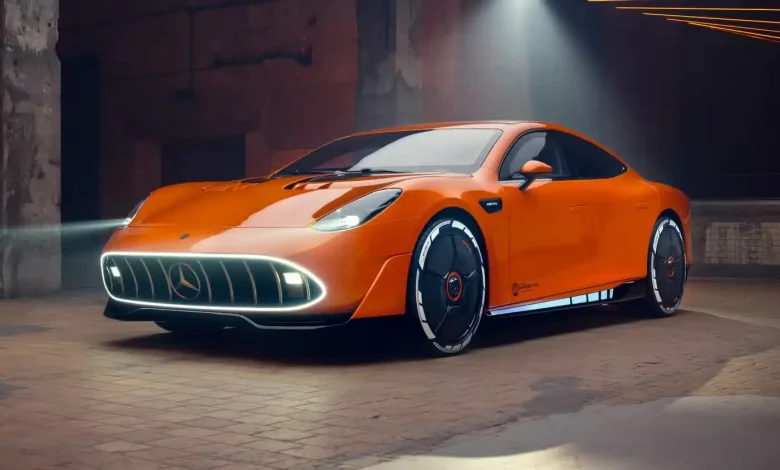
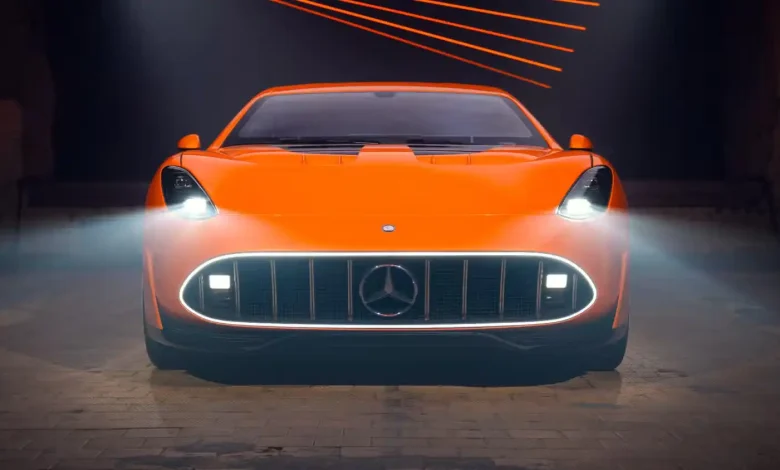

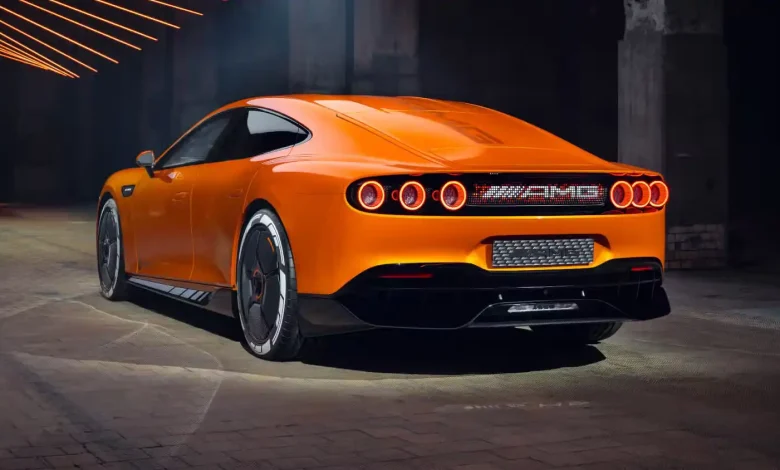
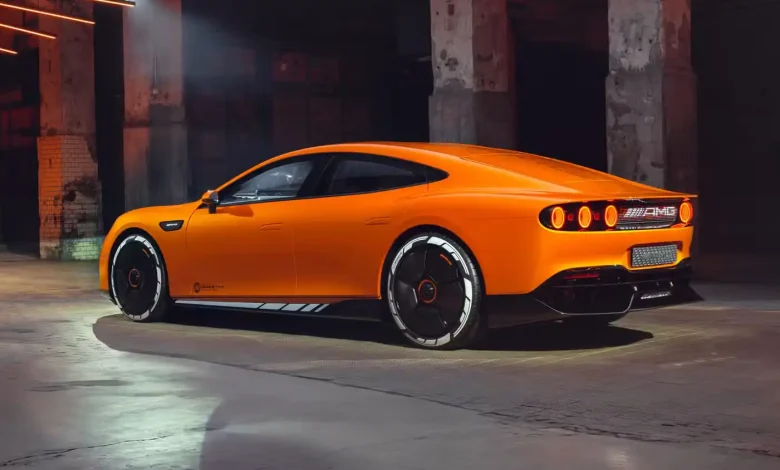
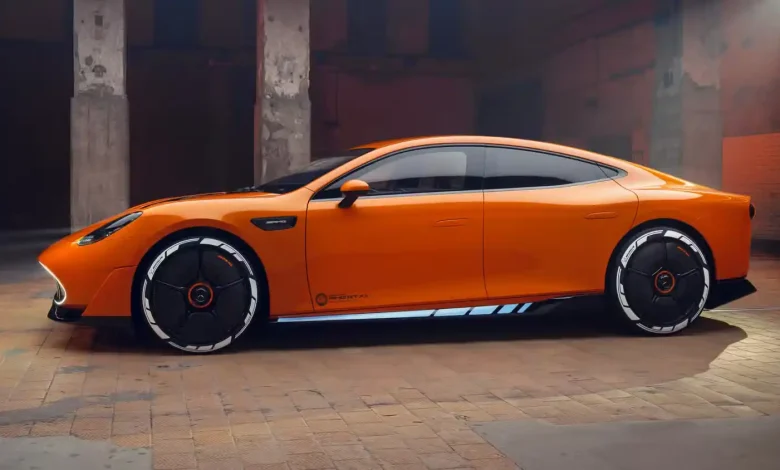

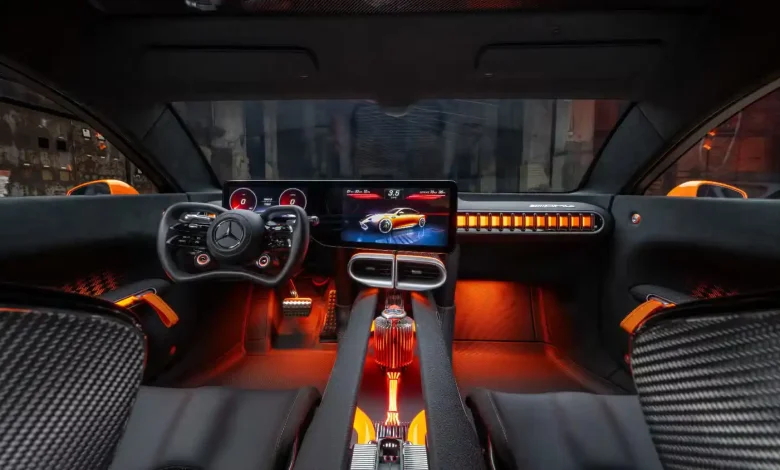
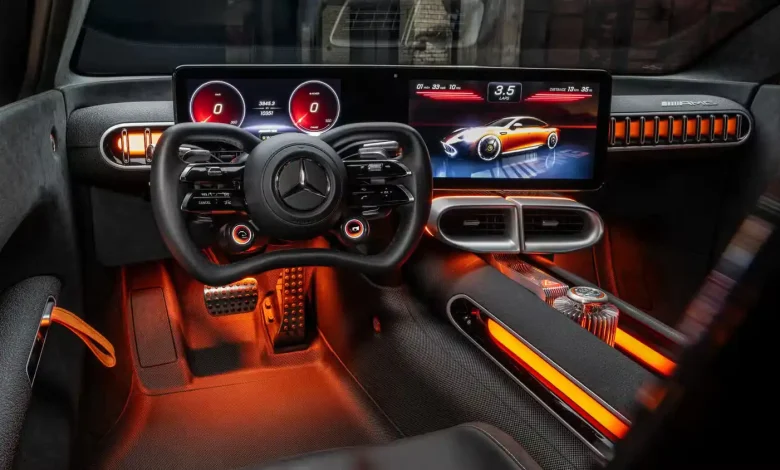
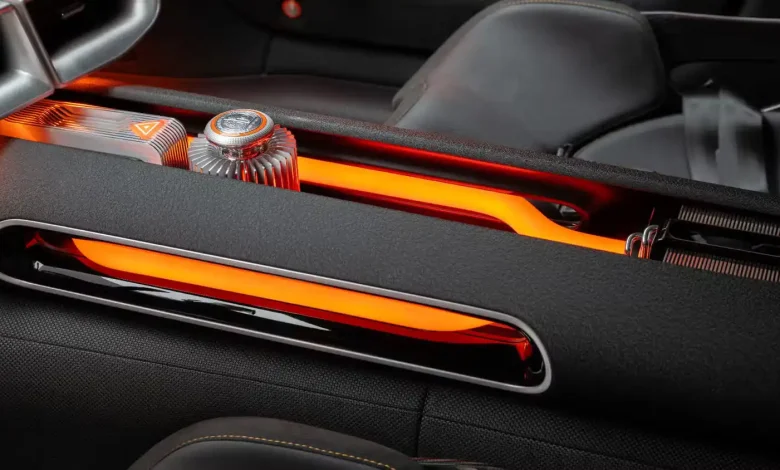
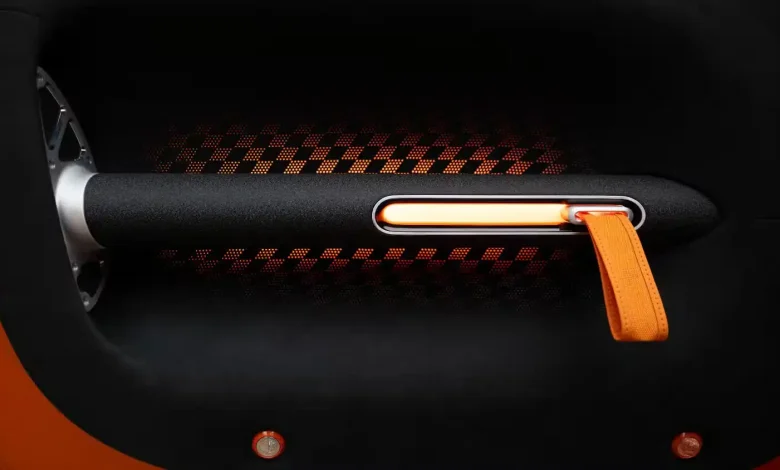

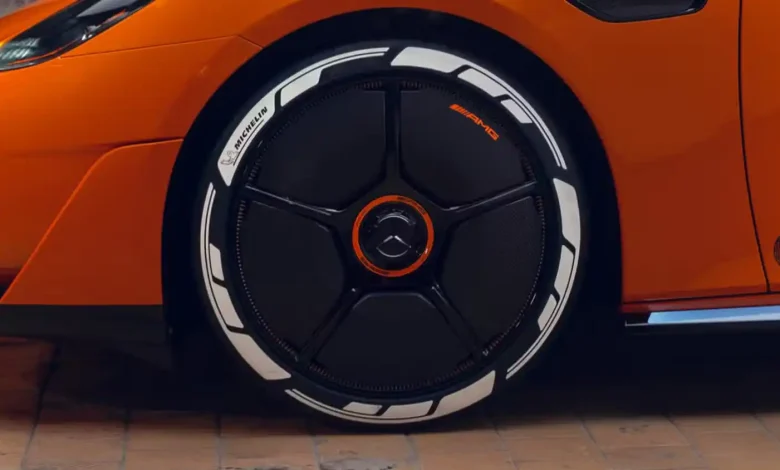



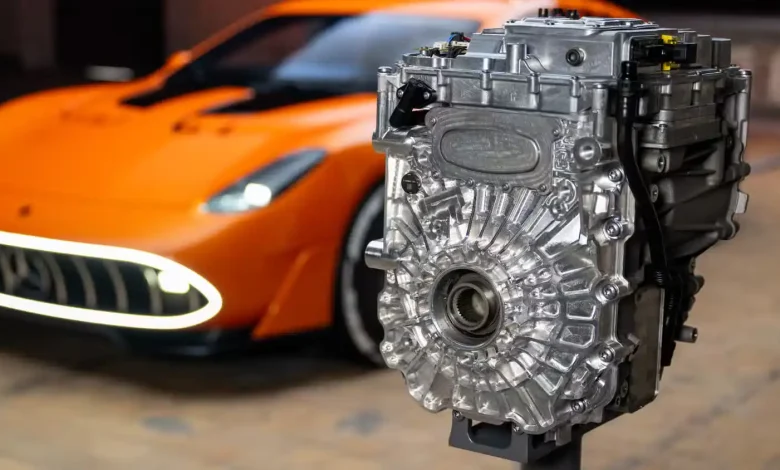





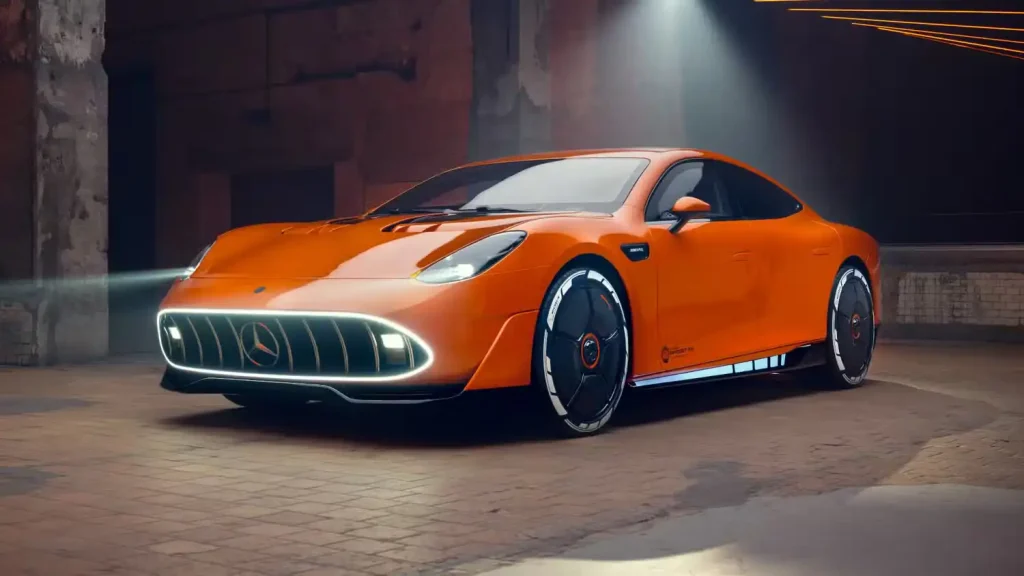
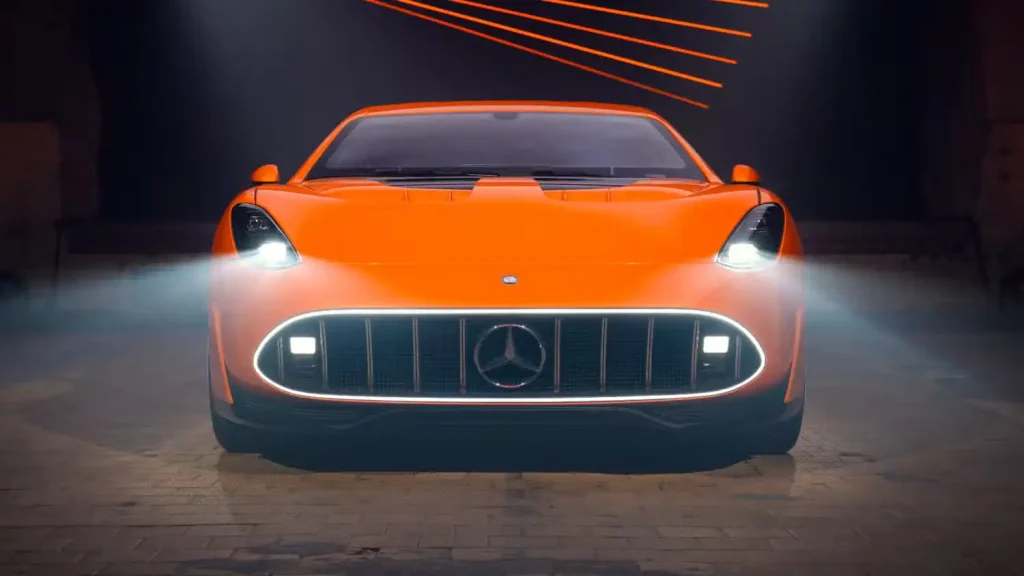

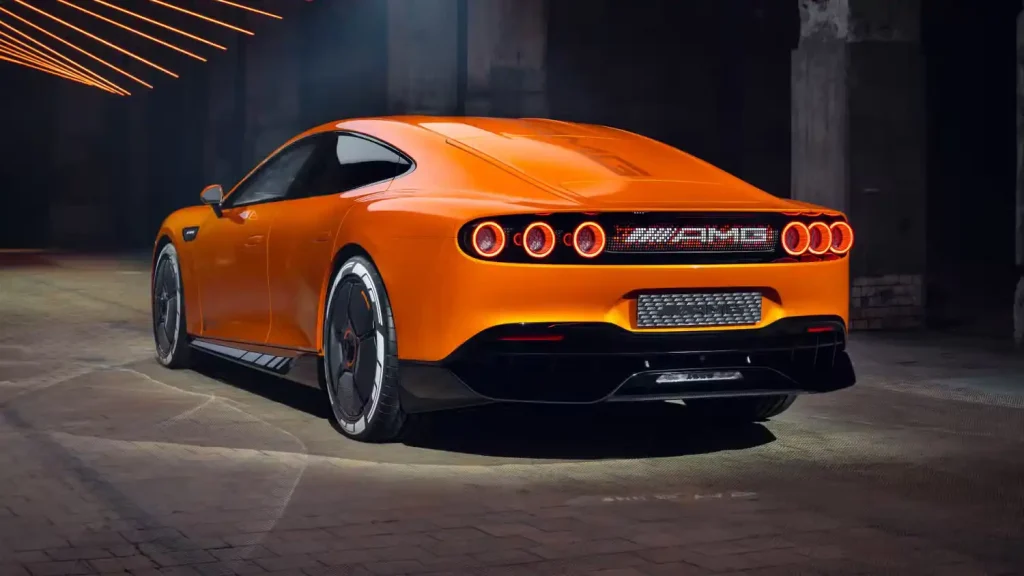
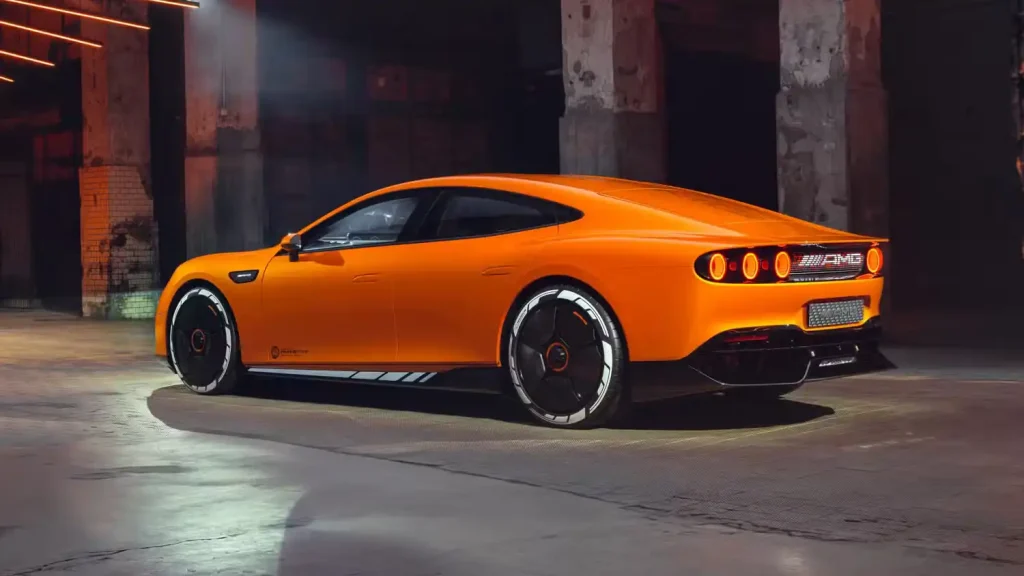


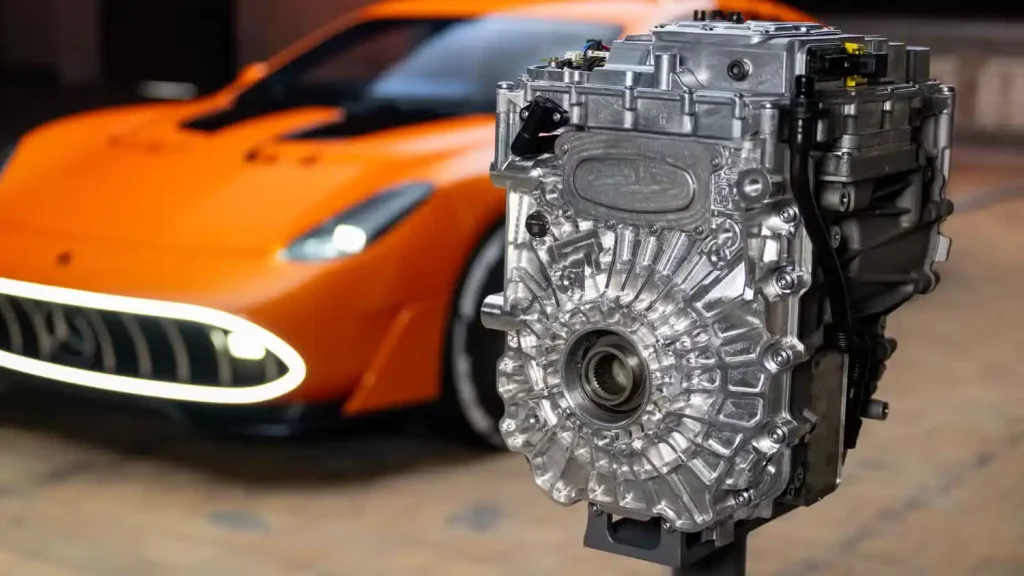
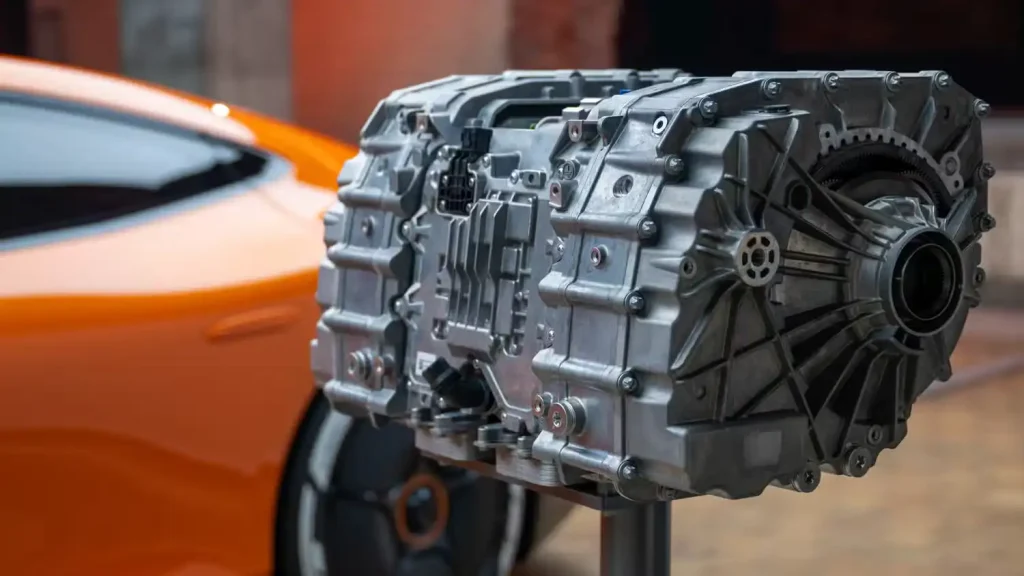

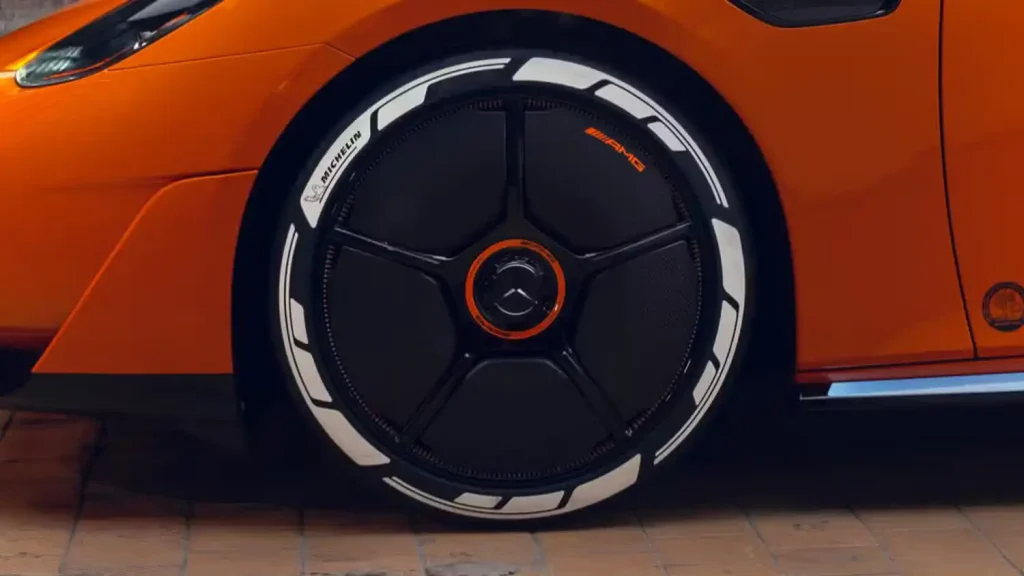
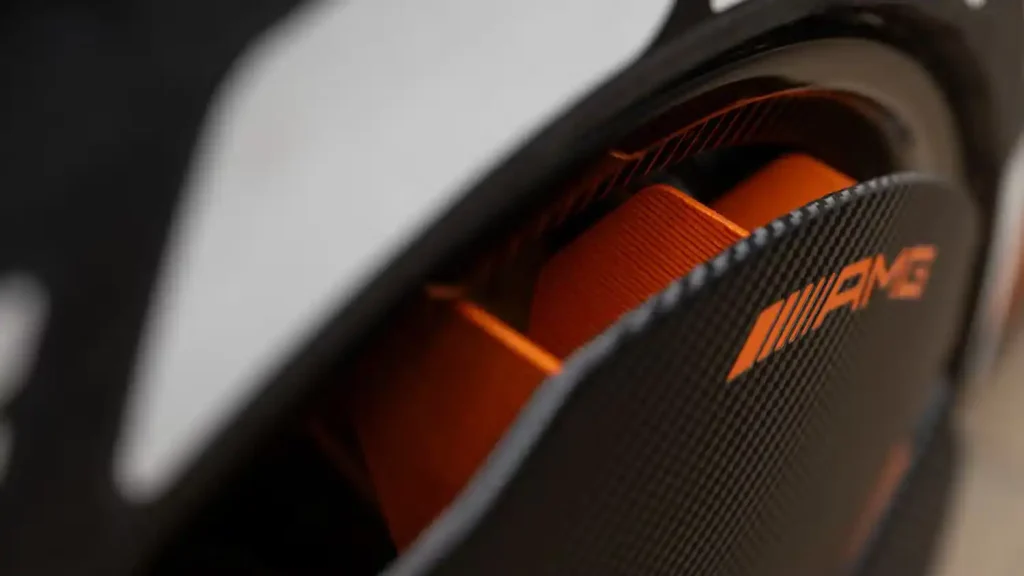

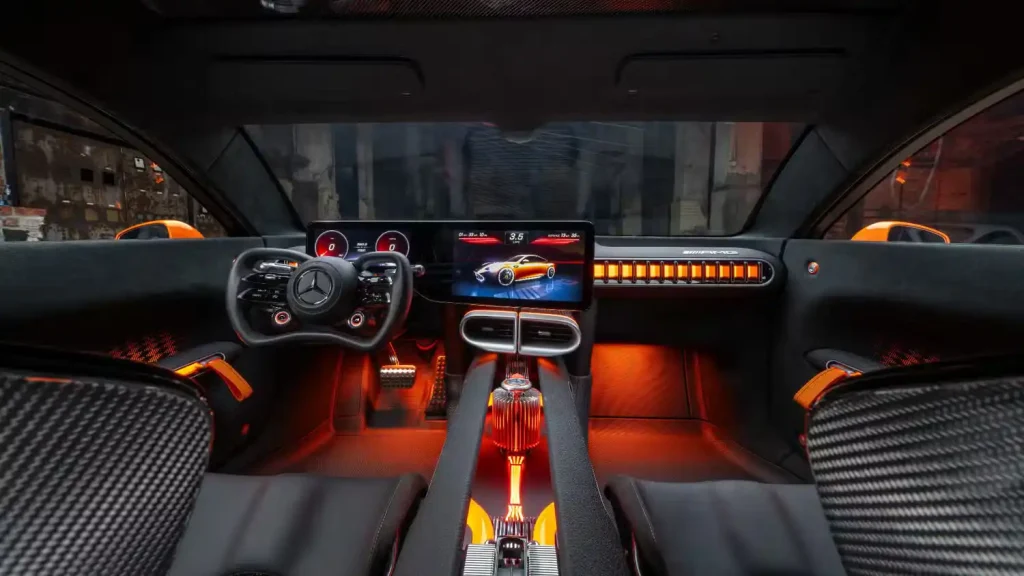
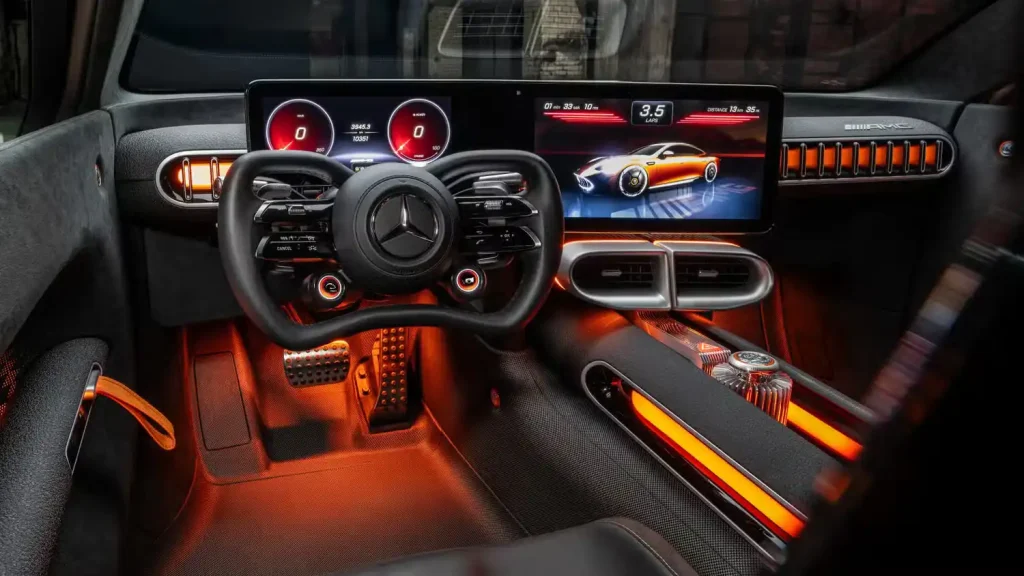
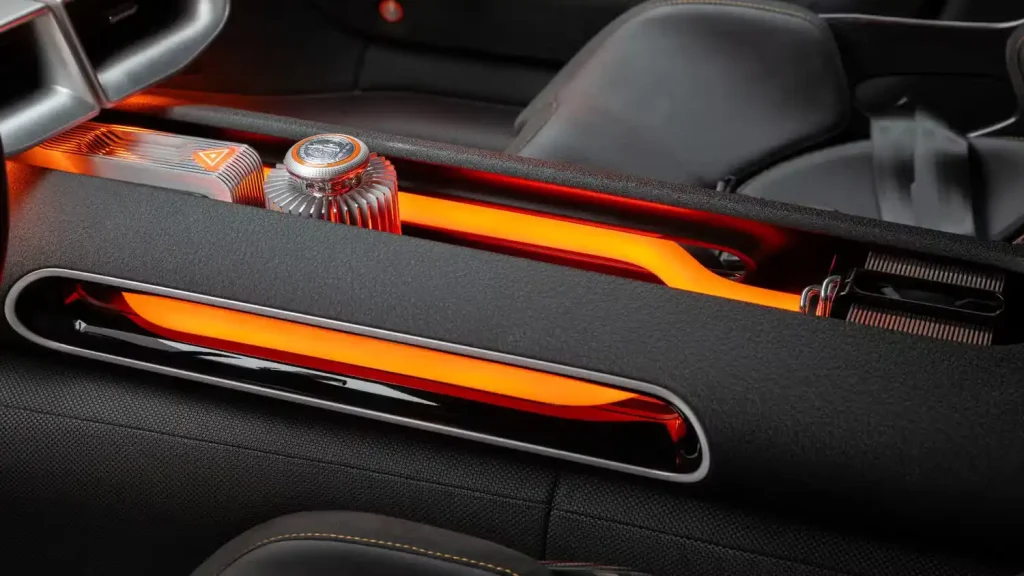
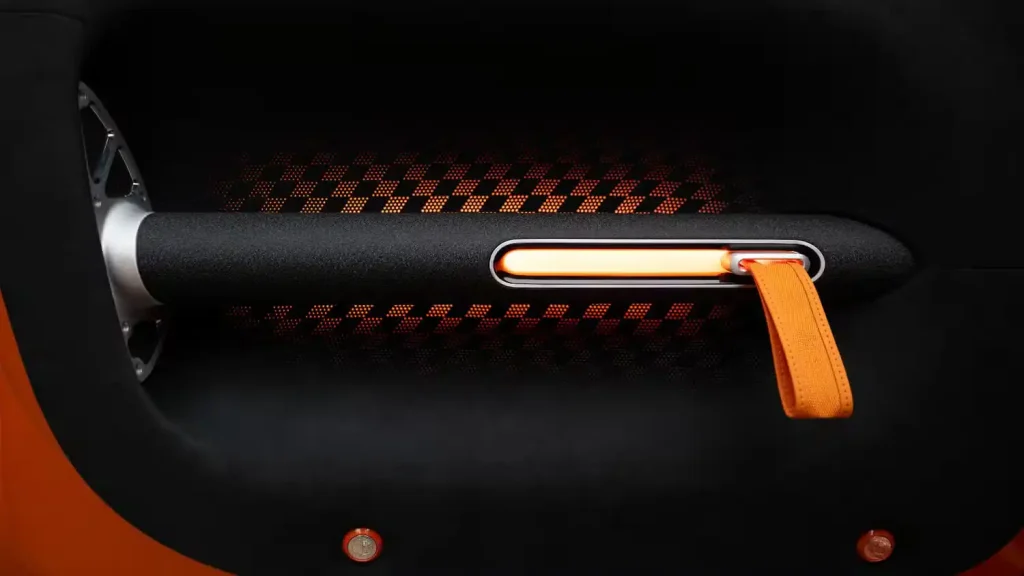








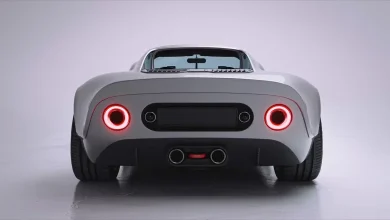






One Comment